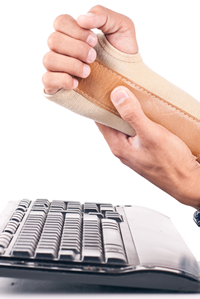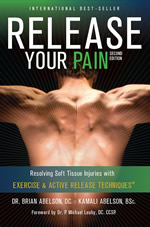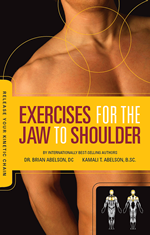Resolving Repetitive Strain Injuries
Posted on Feb 4, 2013 in Blogs, Injury Care
Why is RSI a Problem?
Repetitive Strain Injuries (RSI) are caused by repeated physical movements that cause ongoing damage to muscles, ligaments,  tendons, nerves, fascia, circulatory structures, and other soft tissues. RSI sufferers come from many occupations ranging from musicians and meat packers, to computer operators and construction workers.
tendons, nerves, fascia, circulatory structures, and other soft tissues. RSI sufferers come from many occupations ranging from musicians and meat packers, to computer operators and construction workers.
Repetitive Strain Injury caused by cumulative trauma has become the most prevalent cause of injuries within the workforce. RSIs are among the most misunderstood, misdiagnosed, and poorly-treated conditions in our health care system. Click on the following tabs for more information about RSIs and how to resolve them.
What is a Repetitive Strain Injury?
A repetitive strain injury is a soft-tissue injury in which muscles, nerves, ligaments, fascia, or tendons become irritated and inflamed, usually as a result of cumulative trauma and overuse.
inflamed, usually as a result of cumulative trauma and overuse.
Unlike strains and sprains, which usually result from a single incident (acute trauma), a repetitive strain injury develops slowly over time. Other names for such injuries include:
- Cumulative Trauma Disorder (CTD).
- Repetitive Motion Injury (RMI).
- Occupational Overuse Syndrome (OOS).
- Work-related Musculoskeletal Disorder (WMSD).
 What Causes a Repetitive Strain Injury?
What Causes a Repetitive Strain Injury?
RSIs can occur in any occupation that requires repetitive action, and are typically the result of overuse of some part of your body, in combination with any of the following factors:
- Repetitive tasks with many small, rapid movements.
- Insufficient rest time between the repetitive tasks.
- Working in awkward or fixed postures for long periods of time.
Excessive and forceful movements, used repetitively, to move loads, or to execute accelerated actions such as lifting, running, hitting, or throwing.
Effects of Repetitive Actions on the Body The development of a repetitive strain injury is often quite insidious. Most RSI injuries are the direct result of cumulative trauma, such as those experienced by computer users (who make up a large percentage of our RSI patients).
The development of a repetitive strain injury is often quite insidious. Most RSI injuries are the direct result of cumulative trauma, such as those experienced by computer users (who make up a large percentage of our RSI patients).
Repeated keystrokes cause friction between tissue layers, resulting in small micro-tears and inflammation in the tissues of the hands, wrists, and forearms. The body responds to this inflammation by laying down scar-tissue in an attempt to stabilize the area. (This is somewhat like sewing a patch over a hole in our jeans in order to maintain the structure and integrity of the jeans.)
This scar tissue binds adjacent tissue layers together and inhibits the movement or “translation” of these tissue layers across each other. When this inhibition of movement is also accompanied by additional and continued repetitive actions, it can cause even more friction between tissue layers, resulting in increased inflammation, and bringing about the formation of yet more scar tissue.
In addition, one often sees an increase in compressive force when soft tissues are bound together by adhesions.
Tissues which are compressed together:
- Inhibit nerve function.
- Reduce lymphatic drainage.
- Cause a decrease in blood flow and oxygen transfer to tissues.
- Increase the production of fibroblasts (directly responsible for the formation of scar tissue).
Together, these create a multitude of additional circulatory, neurological, and musculoskeletal problems.
Resolving RSIs with ART Common therapies such as medication, electric muscle stimulation, ultrasound, heat, ice, rest, and surgery have all failed to effectively resolve these repetitive strain injuries.
Common therapies such as medication, electric muscle stimulation, ultrasound, heat, ice, rest, and surgery have all failed to effectively resolve these repetitive strain injuries.
Active Release Techniques® (ART®) (link to the topic About Active Release provides a means to effectively and rapidly resolve these repetitive strain injuries without surgical intervention, and, in most cases, allows you to quickly return to your normal activities. By combining ART with focused, specific exercises, 90% of RSI injury cases can be resolved.
ART provides a way to diagnose and treat the underlying causes of cumulative trauma disorders that often result in symptoms of numbness, tingling, burning, and aching. ART is a hands-on therapy that corrects muscular and soft tissue problems that are caused by adhesion formation from overuse or cumulative trauma.
More Information
Dr. Abelson provides a broad range of information to his patients and the public. They range from published books (eBook and hard-copy), to blogs, YouTube Videos, websites, and articles. Click on the following tabs to access some of his more popular information resources.
Books to Help Resolve RSIs
Release Your Pain: 2nd Edition
Dr.Abelson’s international best-seller – Release Your Pain – provides a detailed description about the anatomy, kinetic chain, and causes of RSIs. It discusses means for resolving these conditiosn, and provides specially selected exercises to help you begin the process of resolution. Visit our website at www.releaseyourbody.com to purchase your eBook or hard-Copy.
Release Your Kinetic Chain: Exercises for the Shoulder to Hand
The phased exercise routines in Exercises for the Shoulder to Hand are designed to build and strengthen the neuromuscular relationships in the structures from your hand to shoulders. These exercises are a critical component of any treatment plan for the resolution of RSIs. Visit our website at www.releaseyourbody.com to purchase your eBook or hard-Copy.
 Release Your Kinetic Chain: Exercises for the Jaw to Shoulder
Release Your Kinetic Chain: Exercises for the Jaw to Shoulder
The specially designed exercise routines in Exercises for the Jaw to Shoulder provide a unique set of exercises that can help you to resolve your RSIs. These exercises include self-massage techniques, and exercises that work to strengthen and stretch the muscles of the jaw and neck’s kinetic chain. Visit our website at www.releaseyourbody.com to purchase your eBook or hard-copy.
Videos about Repetitive Strain Injuries
Watch the following videos for more information about common repetitive strain injuries. Click the left and right arrows to scroll through the videos.
- Plantar Fasciitis
- Click To PlayPlay Video
How to effectively treat Plantar Fasciitis with Active Release Techniques.
- Carpal Tunnel Syndrome – Kinetic Health
- Click To PlayPlay Video
Conventional treatments rarely address these other entrapment sites, choosing instead to focus solely upon the carpal tunnel region.
Blogs About Repetitive Strain Injuries
Click on the following blogs by Dr. Brian Abelson to learn more about Repetitive Strain Injuries.
Eight Common Injuries Effectively Treated With Active Release Techniques
The following is a list of some of the most common musculoskeletal injuries we treat with Active Release Techniques and exercise (Kinetic Health Calgary). Under each title there are links to Blog articles that we have written on each of these subjects. Most of these injuries can be treated effectively (90% of the time) without the need for invasive procedures.
 Active Release Techniques – A Personal Perspective Part 1
Active Release Techniques – A Personal Perspective Part 1
It is my opinion that experienced and qualified Active Release Techniques (ART) practitioners should be classified as being in the top 10% of professionals who can successfully treat musculoskeletal conditions today.
For information about our clinic in Calgary, Alberta, please visit to www.kinetichealth.ca.
(COPYRIGHT KINETIC HEALTH 2013 – ALL RIGHTS RESERVED)


Leave a Reply